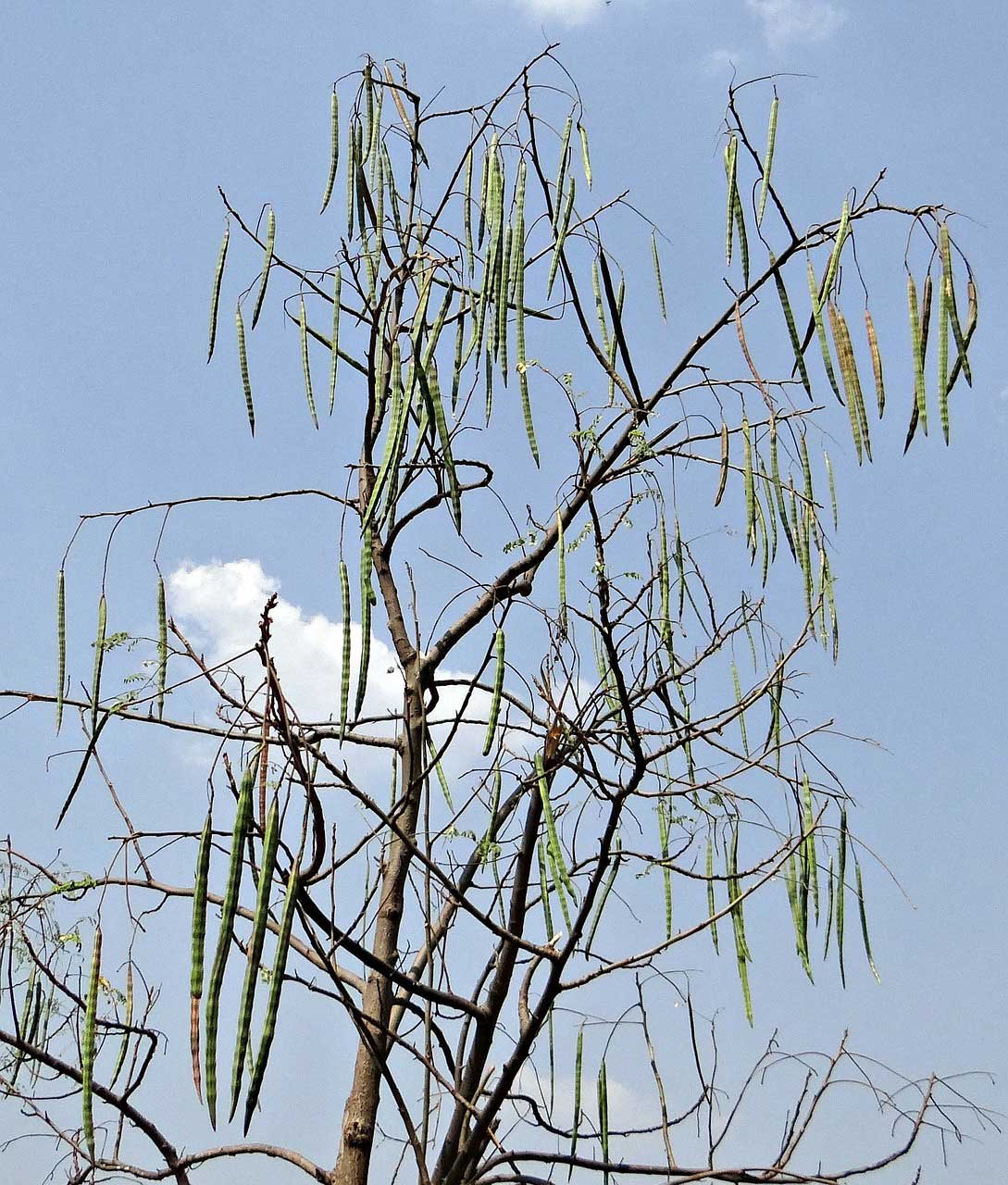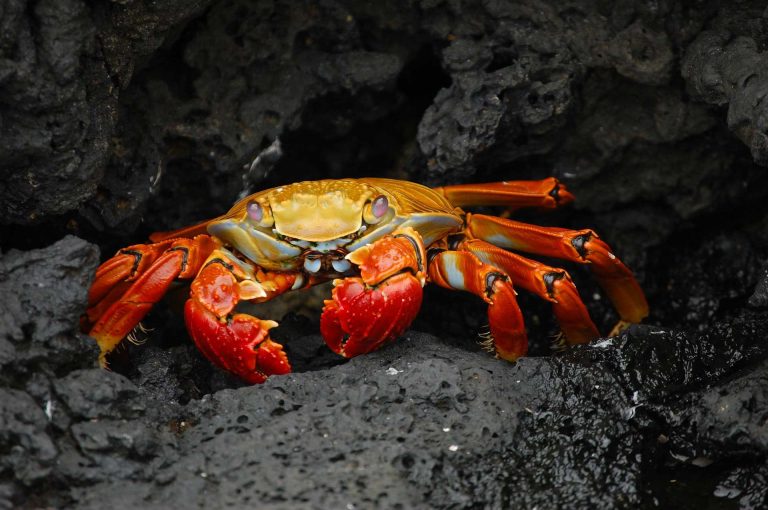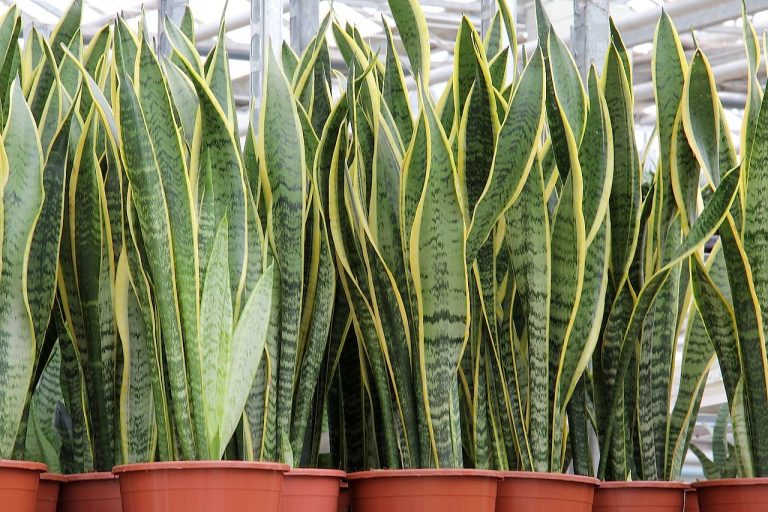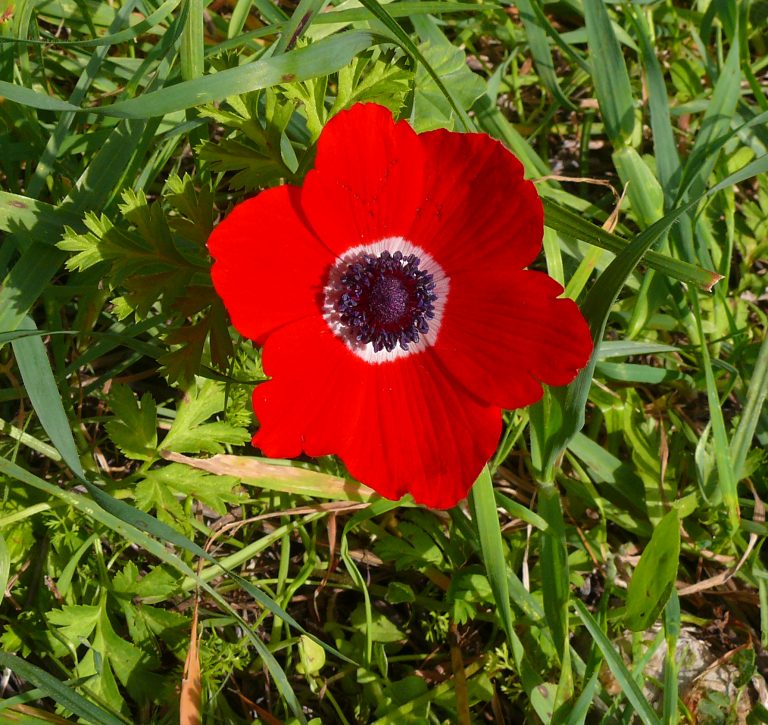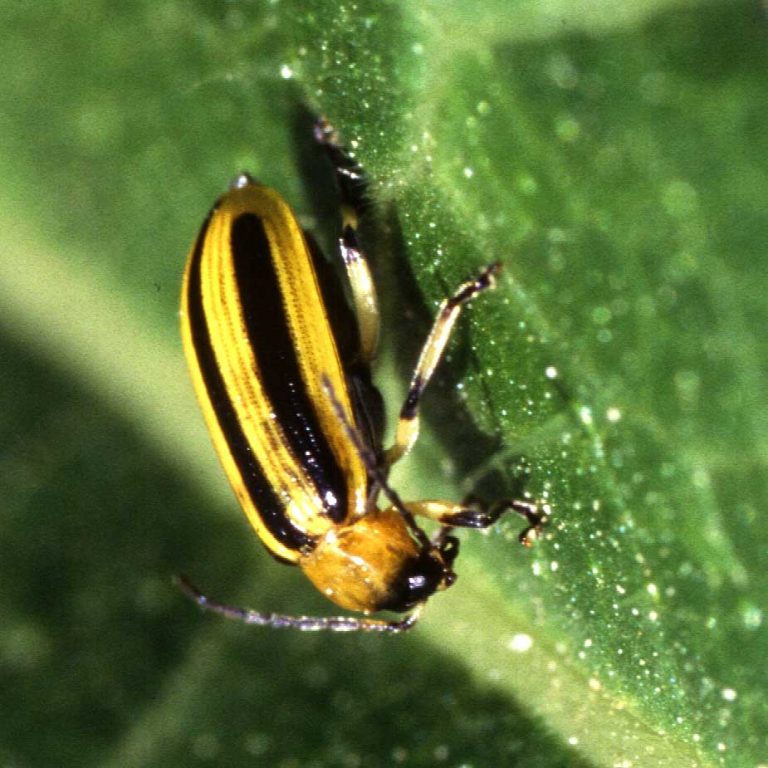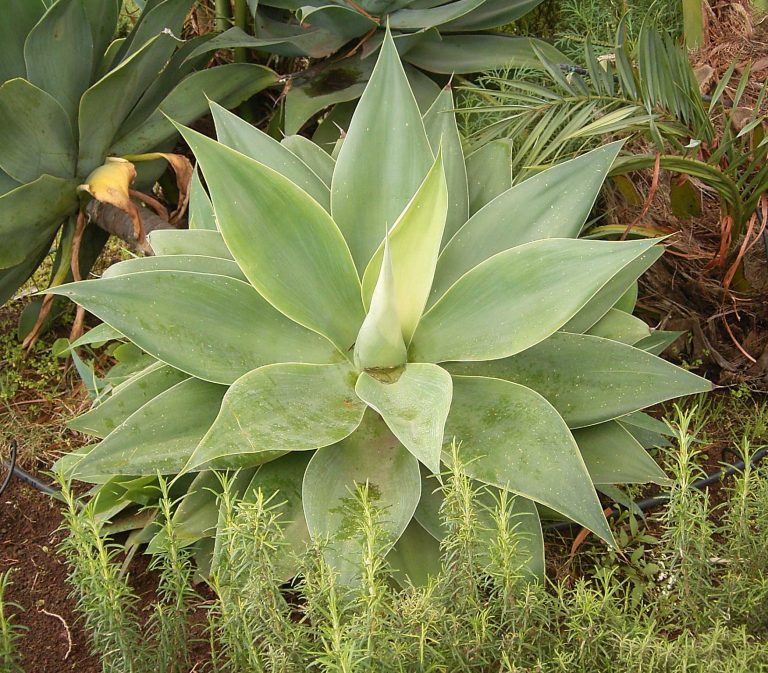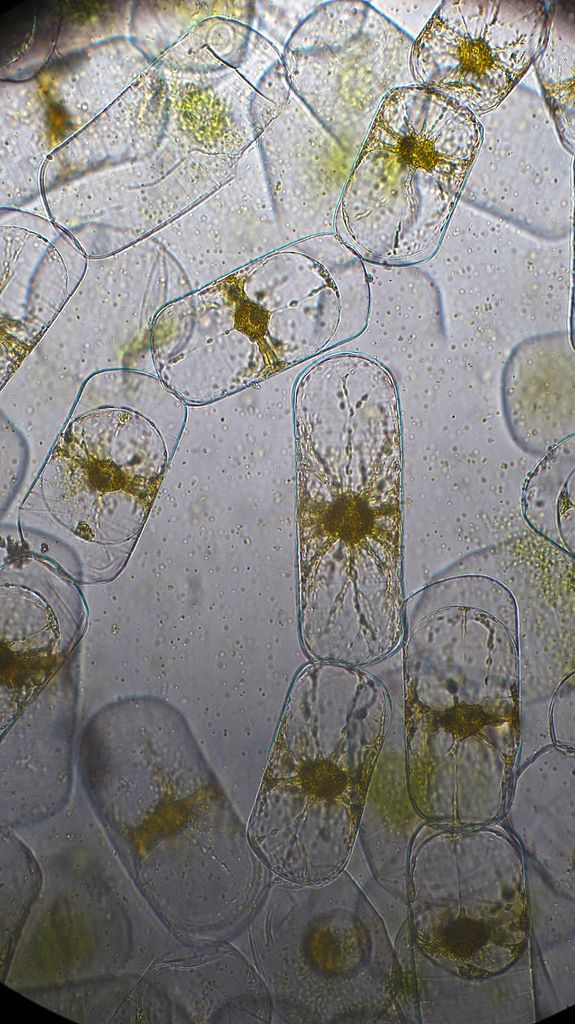Moringa Tree
Scientific classification
| Kingdom: | Plantae |
| (unranked): | Angiosperms |
| (unranked): | Eudicots |
| (unranked): | Rosids |
| Order: | Brassicales |
| Family: | Moringaceae Martinov |
| Genus: | Moringa Adans |
| Type species: | Moringa oleifera |
Moringa is an inhabitant of Asia and Africa, which is the only genus among the Morningaeae flowering plant family. It obtained its name from the word, in Tamil “Murugai”. This comprises of 13 varieties that grow in size ranging from small herbs up to huge trees in the subtropical and tropical climates.
The majority of these plants are suitable for eating by animals on the farm and by human beings as well. The miraculous Moringa leaf of this plant is rich in vitamin B, C and A and in proteins as well as minerals. This Moringa is well thought out as possible feedstock of oilseed for biodiesel.
The buds and blossomed flowers are mildly cooked and consumed as a vegetable of nutritious value.
Anatomy
Moringa is a slim softwood tree; it freely branches and grows very fast. It grows to heights of 10m (33ft) and more. Even then, normally we find them grow to medium or even small trees. The leaves are of size 1 to 2 cm (0.4 to 0.8 in), these tripinnate feathery compound leaves are green or deep green in color and of an elliptical form, and people generally mistake this for a legume. The flowers are arranged collectively, they are very distinct with mild fragrance and of size 10 to 25 cm (4 to 10 in.) in length, the color of the flowers is normally cream or white and I certain varieties they have a hue of pink.
Habitat
The tree Moringa grows wild in North Indian sub-Himalayan provinces. At present we see it grow all over the world in sub-tropics and tropics. In India, Philippines, Ethiopia and in Sudan, people consider this tree as an essential crop. It is also grown in the south, west and East of Africa, Latin America, Tropical Asia, Florida, the Caribbean and The Pacific Islands. Generally it is known by the name “horse-radish” tree (taken from the condiment taste cooked from its roots) or rather ‘drumstick’ tree (taken from the pod’s shape),
M. Oleifera are called by many other names in the vernacular languages, which is indicative of the presence of the trees, the world over.
GROWING AT HOME
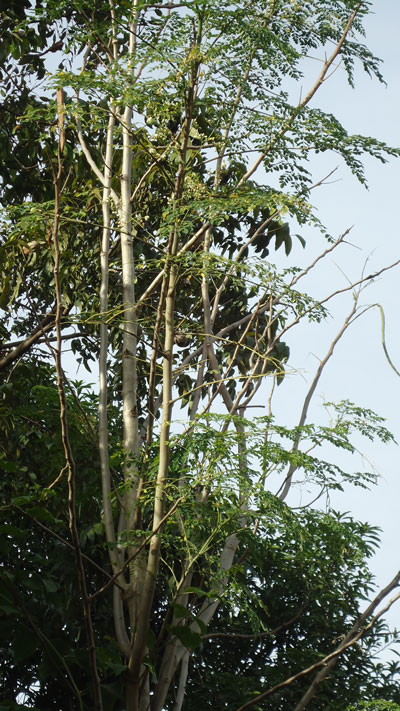
Soil for Planting
Moringas do not grow well in vermiculite or rich clayey soil. They grow very well in sandy soil, used up and poor soil. Remember not to wet its roots. In case it is necessary, get sand and add it with a mixture of potting soil, or make use of any soil available in your garden and then add coconut fiber. Perlite, peat moss or loosen it with sand. This enables the Moringa roots grow deep and drain properly. Moringa has a single Taproot which grows right down. There are tiny feeder roots. But branch roots are not there. Plant your Moringa in places where there is sufficient room for the growth of the roots. In case you decide to plant it in a pot, choose one that is deep enough. You can grow your Moringa as an edge, in rows or as a single tree.
Even though Moringa is in favor of Loam or properly drained sandy Loam soil, it adjusts with clay. With poor drainage or in floods, they never survive. Moringa favors a soil of pH 5.0 to 9.0.
Planting
In order to watch the growth of the seed remember the date when you sowed it. After enclosing the seed with soil, water it properly. If you have sown the seeds in pots or directly in the ground, they require sufficient water that soaks them daily, till you observe the seeds sprouting from the soil. After sprouting water them on alternate days till they attain a height of 18 inches and after that, water them weekly once.
Watering
Moringa trees grow very well without water, making it ideal for the climatic conditions in places like Southern parts of California. If the environment is more arid, regular watering is essential for the initial 2 months, thereafter water the tree only when it is in dire need. Moringa trees blossom and yield pods only if enough water is provided.
If there is regular rainfall the year round, your Moringa trees will yield regularly. Whereas when the environment is dry only irrigation will induce the tree to blossom.
Temperature and Humidity
Moringa is adjustable to a variety of weather situations. 25 to 35 degrees C is ideal for its growth, but it adjusts well, even with 48 degrees C when in the shade. Besides, it tolerates slight frost also. In conditions when the trees are adjustable to dry environments, they thrive well in locations where the yearly rainfall ranges from 250 to 1500 mm. Moringa trees prosper well at altitudes lower than 600 meters even though it adapts to changes, it thrives at heights of even 1200m in the tropical regions.
Flowering and Maturing
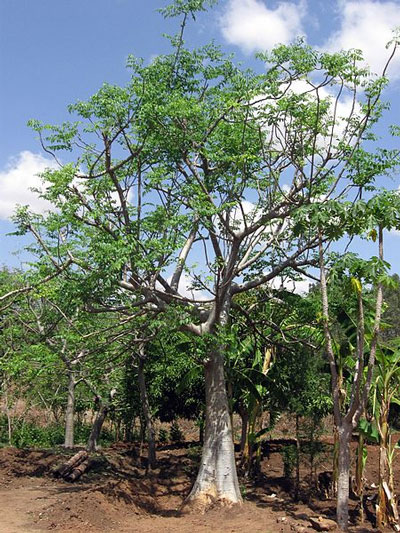
Care
- Moringa is resistant to arid conditions, but not to cold weather conditions, since, if they get frozen, they collapse.
- Moringa trees flourish quickly, and the best way to retain their height is by nipping the tips of the branches to maintain the height. Shear half the length of the branch which will enable the Moringa tree to give out branches from the trunk and further hold back its growth to beyond 30 feet, where you find difficulty in reaching the flowers, foliage, pods and buds.
- Retain your Moringa tree to a height of 8 – 12 ft at the most if you desire to get to it at harvest time. In case you fail to do so, you obviously get a thin and very tall tree branching at the top that is unreachable and unappealing.
Regularly prune your Moringa at the top. This way, the trees produce, more branches, towards the bottom of the trunk. Besides, it is possible for you to shear the leaves and branches halved permitting fresh leaves to grow at the fork of the branches of the tree. Never throw away the trimmed portions place them at the bottom of the tree as good mulch that resist the growth of weeds.
Pest and Pesticides
Even though Moringa withstands the majority of diseases and pests, reacts poorly to unfavorable situations like the diplodia(anamorphic fungi) of root decay that occurs in places where the soil is logged with water, leading to acute drooping, resulting in the plant’s death. When the weather is cool and dry the mite menace plagues the plant. These mites turn the leaves yellow; however, these plants normally regain their health conditions when the weather turns warm. Besides, the mites are insect pests like, aphids, whiteflies, termites, leaf miners and caterpillars.
Apply chemicals to suppress the insect pests except when the infestation is acute. While selecting a pesticide go for the one that is particularly meant for destroying the desired pest; do not use insecticides that destroy or prevent the growth of the useful organisms. Select a pesticide that is effective just for a couple of days.
Goats, sheep, pigs and cattle consume the pods, seedlings and leaves of the Moringa. Safeguard your Moringa seedlings from these animals by constructing a fence or hedging them with plants surrounding the area.
The hairy caterpillar pest (Eupterote Mollifera) is of special significance. Its larvae appear in groups on the trunk, eating the foliage and scraping the bark, with defoliation resulting from severe infestation. As soon as you see them, destroy the eggs and caterpillars completely, and, if needs be, use a burning torch to burn them to death. God forbid, if one of these hairy caterpillars touch your body, you will experience severe itching and light red swelling.
Harvest Month and Storage
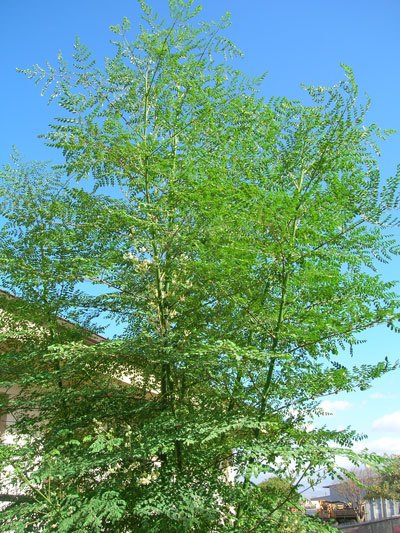
Photo by: Forest & Kim Starr
Harvest Moringa leaves only when it grows to a height of 1.5 to 2.0 meters that is achieved only after a year. Harvesting is done by breaking the stems of the leaves from the branches. When you harvest the tips of the tender shoot it encourages the sideways branching in situations where cuts are made through the main branches. In case you plant your Moringa close to each other and they display a dense growth, then shear the plants almost 10 to 20 cm from the ground.
While harvesting, take the very tender, full plant, old as well as young leaves and also the flowers for your food. Harvest the lean,, tender pods (called drumsticks) that you can consume in the same manner as asparagus. Otherwise, cook the seasoned pods and scoop out the inside white, fleshy portion and, seeds and eat them. In order to promote growth of fresh branching, regularly prune the seasoned branches that flower.
While the pods are harvested for preparation of food take the pods that are tender (almost 1 cm diameter) and pluck them with ease. The seasoned ones have a thick covering; still the white flesh and seeds within them are quite edible when they ripen.
Reap the pods prior to being cracked and the seeds disperse on the ground. Store your seeds in dry sacks that have air holes and place them in the shade.
Varieties
Moringa stenopetala and Moringa oleifera are always among the varieties of Moringa that are cultivated. The variety of Moringa that we concentrate on and is extensively grown, is the Moringa oleifera. The species among the Moringa Oleifera change the characteristics of their pod, their leaves,flowers and their growing nature. To enhance the nutritious value and production, various accessions are considered for evaluation at the Asian Vegetable Research Development Centre or the AVRDC.

Having discovered a fondness for insects while pursuing her degree in Biology, Randi Jones was quite bugged to know that people usually dismissed these little creatures as “creepy-crawlies”.

